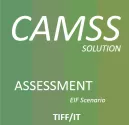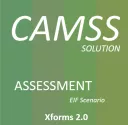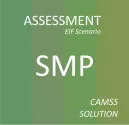Suomi.fi-Finnish Service Catalogue is a base register and a software solution that includes standardized structured metadata of organisations, services and service channels. The data model is based on CPSV-AP (Common Public Service Vocabulary Application profile) but includes also wider and more detailed information on services and service channels.
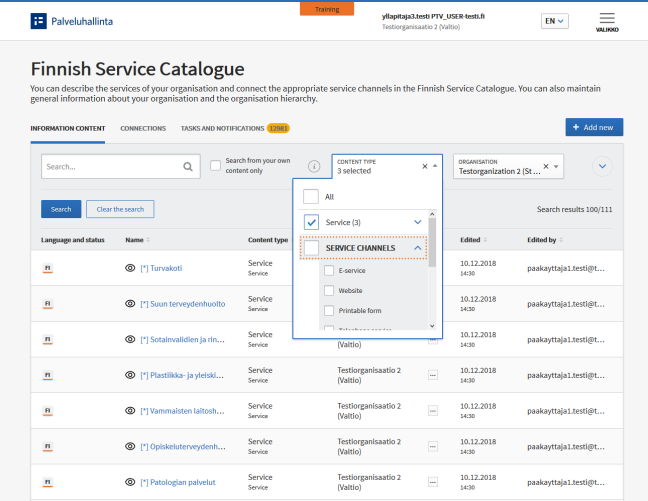
Key features:
-
Structured multilingual (currently Finnish, Swedish, English and three Sámi languages are supported as is) metadata of organisation, service and different type of service channels, based on CPSV-AP.
-
Manual multilingual (Finnish, Swedish, English) user interface for providing and updating the data.
-
Search, copy, base-descriptions, tasks and notifications etc. for data administrators.
-
REST-API:s in and out for fetching and providing service data from other information systems.
-
Support for ontology-based keywords (in Finland, this is based on Finto.fi-service).
-
Map-interface for location-based data and WFS-server.
-
Microservice-architecture built on .NET and Docker and data stored in PostgreSQL, user interface is based on ReactJS and translations held in Transifex for easy adding of new UI languages.
-
All content of the Service Catalogue is open data, available through open API and licensed under to Creative Commons 0 (CC0).
-
Open PTV API: https://api.palvelutietovaranto.suomi.fi/swagger/ui/
-
The data model described in Finnish Interoperability platform: https://tietomallit.suomi.fi/model/suomiptv/
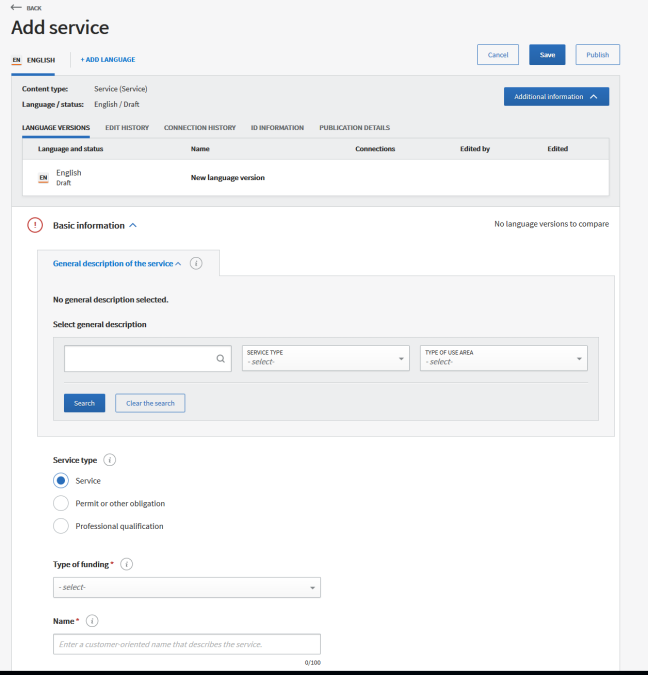
The Service Catalogue uses also outside code-services and SaaS-solutions to further richen the content (e.g. postal address-codes in Finland, map-service, commercial automatic annotation and a natural language identification and correction services and connections to translation services through outside API:s). Other countries or organizations can replace these with their own local services when deploying their own version of the service catalogue. UI languages can be modified through Transifex from English to other languages.

Finnish Service Catalogue is fully open source and available on Population Register Centre (PRC) of Finland's GitHub: https://github.com/vrk-kpa. The service is constantly developed further and the latest source code is frequently published to GitHub.
In Finland, the Suomi.fi-Finnish Service Catalogue is run centrally by PRC as a shared ICT-service and the service is available freely for public, third sector and private sector organizations. Finnish Service Catalogue is mandatory to use in Finland by law (the law on common administrative e-service support services 571/2016) by all public sector organisations, thus containing the information of all public sector services and service channels (~150 000 descriptions).
Benefits for end-users
The end-user sees the data as consistently presented service data, regardless of the web page or the context where it is used. The end-user can easily find the service related data by using ontology-based keywords, regardless of the organisation providing the service. For the end-user it is important that the data can be trusted and that the services have been described based on the needs of the customer and their situation. In addition, the understandability, accuracy, accessibility and comparability of the data are essential. Showing data on a map provides additional value to it, for example, by providing routing or showing the accessibility data of physical locations.
In Finland, most of the content in national Suomi.fi-portal comes from Finnish Service Catalogue.
Example of the data fetched from the Finnish Service Catalogue as a search result on ontology-term “day care”: https://www.suomi.fi/search?q=day%20care&ct=palvelut&f=0&mode&s&sl=false
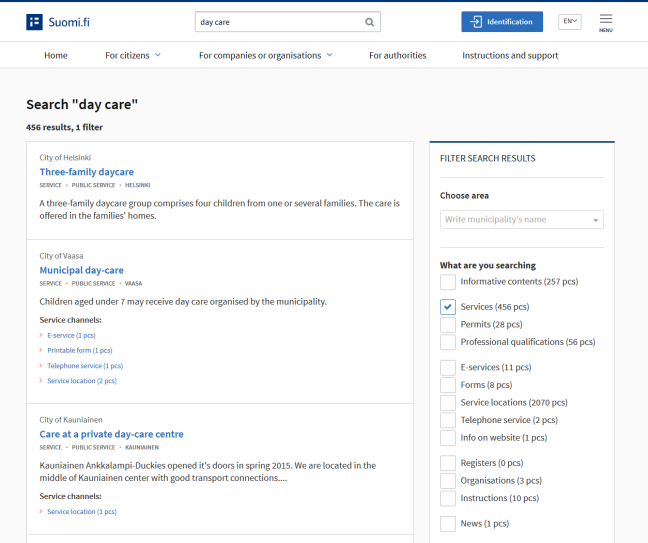
Benefits for the user organisations
Suomi.fi-Finnish Service Catalogue creates a national base register of service data and therefore can be used in all services as a base register:

-
Service data can be utilized in any online service by using an open interface.
-
With the use of the Finnish Service Catalogue data model, such a detailed description of the service can be provided that the amount of unnecessary customer queries and contacts is reduced. The focus is on the customer as a user of services, not the organisation. When a user is searching for services they can find all the services for the same topic or life event with one search in one place regardless of the service provider.
-
With the help of the Finnish Service Catalogue, all data on public administration services is produced semantically consistently regardless of the level of government, governmental area or service channels.
-
The Finnish Service Catalogue data creates a digital image of the situation in the public administration service field that can be viewed from several points of view offered by the Finnish Service Catalogue data model. Data analysis may also be used to recognize overlapping and interacting services more effectively. All this will support leading with information in the overall development of services in the national level.


